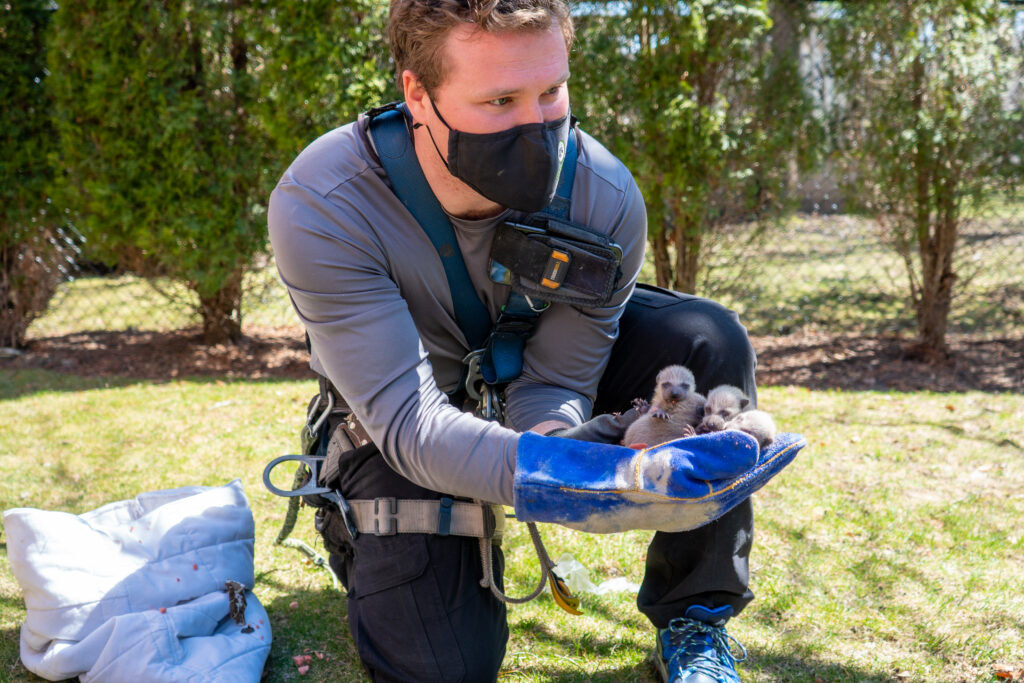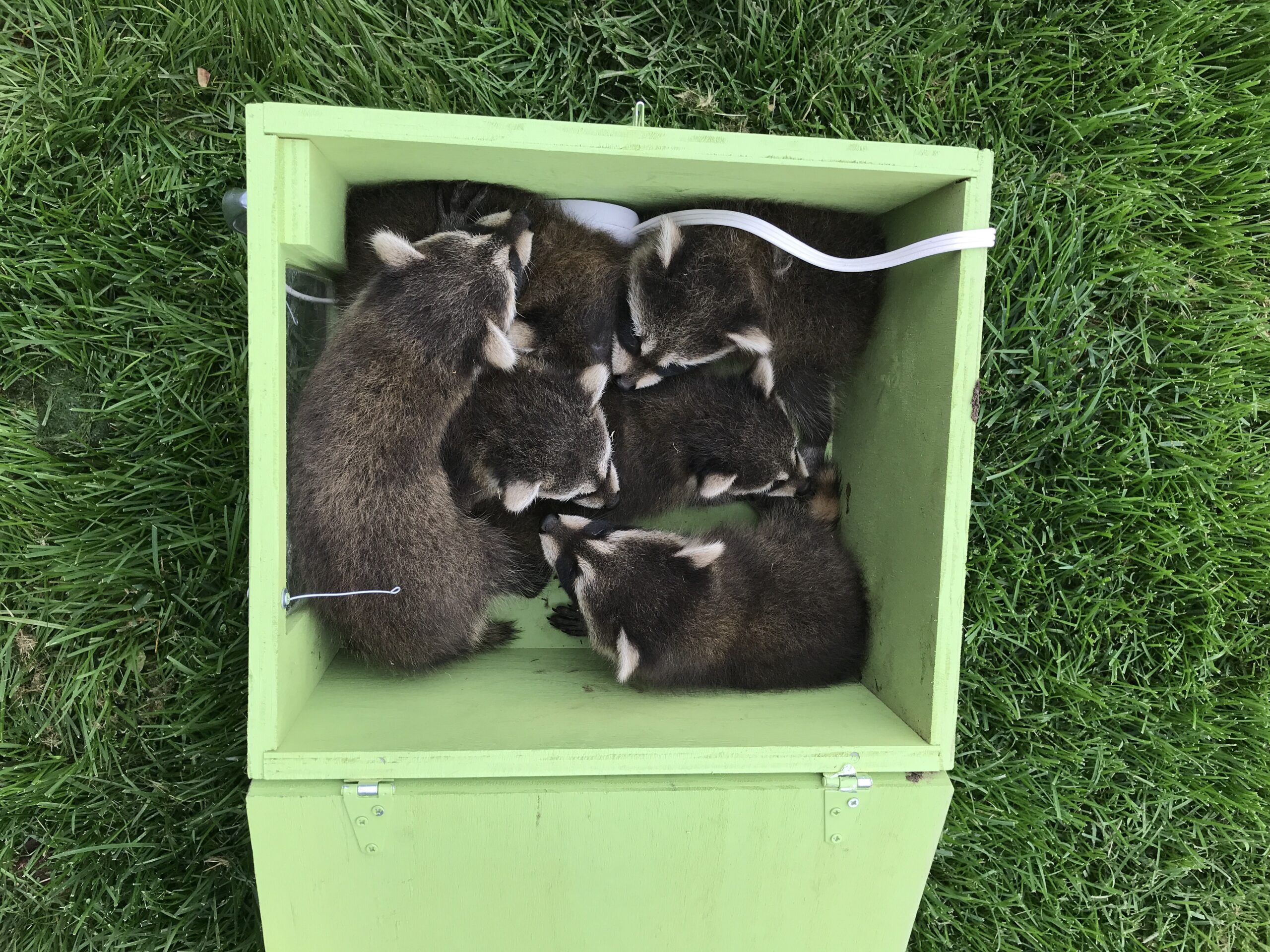Welcome to a comprehensive guide that aims to protect your homestead from intrusive wildlife. We understand the anxiety that can be stirred by an unexpected encounter with these night prowlers, especially the raccoons.
In scenic towns like ours, harmonious coexistence with nature is an inevitable part of life. However, there’s a fine line between living in harmony and becoming an unwilling host to wildlife. Through this resource, we aim to equip you with relevant tips to keep your premises secure, reducing your odds of unwanted encounters.
Encompassing everything from discerning signs of infestation to recognizing the symptoms of rabies, we leave no stone unturned.
Our expertise doesn’t end here. We provide a step-by-step guide to managing wildlife invasions, with key advice directly from an experienced wildlife technician. Moreover, we heavily emphasize the advantages of turning to a professional for wildlife removal in Hennepin County.
Your peace of mind is our priority, and securing your property against raccoons forms the backbone of this commitment. Let’s delve into these proactive measures to safeguard your home and property.
What are the Dos and Don’ts of Raccoon Encounters?
When you cross paths with a masked nocturnal creature rustling through your garbage at night, it’s crucial to know the right actions to take and what you should avoid doing. Here are some key guidelines to ensure harmony with our wildlife neighbors while safeguarding your home.
- Do stay calm if a raccoon approaches you. Frantic movements may excite or agitate the creature, leading to problematic behavior.
- Don’t provide food intentionally or unintentionally. Bears and raccoons share common habits, one of those being dumpster diving. Secure your garbage and compost to divert potential pests.
- Do educate children and guests about respecting wildlife from a safe distance.
- Don’t try to pet or capture raccoons. They are wild creatures and may react defensively if they perceive a threat.
- Do employ professional wildlife services for safe and humane removal if a raccoon establishes a nest on your property.
Understanding and closely following these guidelines can increase the chances for peaceful coexistence with our wildlife neighbors. Respecting their space and employing expert removal practices protects both your household and local raccoon populations from potential harm.
What are the Common Signs of a Raccoon Infestation?
Being aware of the indications pointing towards a critter invasion can be instrumental in early detection and management. Following are the telltale signs that might suggest an unwelcome visitor of the nocturnal bandit variety is lurking around your domicile:
- Damage to the home structure, especially a breached attic or exterior damage, may point to the likelihood of them nesting.
- Scratching and thumping sounds, particularly during the night, are a prime time for these creatures to be active.
- A worsening garbage situation where trash cans are toppled or refuse is strewn about might indicate their scavenging habits.
- Observation of droppings or sightings during the day, a shift from their usual nocturnal behavior, can potentially signal an infestation.
- The aforementioned encounters are associated with these masked critters or the presence of footprints around your property.
Observing one or more of these indicators can be a gentle nudge to start considering removal strategies. Remember, it’s essential not to attempt removal yourself as it can be risky. It’s always advised to contact professionals who are experienced in managing wildlife conflicts. Familiarizing yourself with these signs and acting promptly can help safeguard your surroundings, ensuring the wellness of both dwellers and the naughty intruders.
How Can You Tell If a Raccoon Is Carrying Rabies?
Need to know how to tell if a raccoon has rabies? Understanding the signs of a potentially rabid creature can be lifesaving knowledge. Here are some signs that you should always be aware of:
- Erratic Behavior: Creatures like raccoons usually express strange or erratic actions if they are infected. This includes being active during daytime hours, as they’re typically nocturnal.
- Aggression: A sudden shift towards aggressive tendencies or erratic behavior towards humans or other animals might be symptoms of rabies.
- Foaming at the Mouth: While this is a common symptom associated with rabies, it does not always occur. Its presence, however, is a clear indication of a possible infection.
- Difficulty Walking: Infected animals often have issues with locomotion; they may stumble, stagger, or appear generally uncoordinated.
- Paralysis or Weakness: As the disease progresses, an infected critter may experience paralysis often starting with the hind legs, or display a general physical weakness.
Remember, these signs might also be indicative of other health issues, so it’s important to approach these situations with care. If you encounter an affected animal, seek professional help immediately to deal with the situation safely, rather than attempting to handle it yourself. Identifying these signs can help keep you safe in your wildlife interactions.
What are the Step-by-Step Procedures for Dealing with Raccoons Using Wildlife Control?
Addressing a furry intruder in your residential area requires sensitivity, care, and knowledge. Here is an outline of the crucial stages when dealing with these nocturnal visitors using a humane approach to animal control.
- Assessment: The first action is to identify signs of the intrusive species on your premises. Examine your surroundings for evidence such as damaged trash cans, footprints, and noises in the attic or under the deck.
- Identify Source: Discovering where the nocturnal visitor enters and exits your property helps establish a targeted plan. They often frequent places like hedges, under porches, lofts, and sheds.
- Implement Control Methods: Use animal-specific humane devices to remove unwanted guests without causing harm. Depending on the situation, these methods can include one-way doors or hands-on removal.
- Property Modification: Reinforce weak points in your housing structure where the intruders could gain access. This could involve sealing entry points or constructing barriers.
- Monitor: Regular checks help to confirm the effectiveness of the removal procedures and ensure your space remains free from uninvited visitors.
Handling encounters with these intriguing creatures can be a complex process but ultimately rewarding when done right. Applying the proper removal techniques not only assures the safety of your property but also ensures the humane treatment of wildlife. Remember, maintaining your property as unattractive as possible to wildlife will deter a possible return of the creatures.
What are the Top 5 Tips by a Wildlife Technician for Keeping Your Property Safe from Raccoons?
As we journey into this wilderness of animal encounters, it’s critical to arm yourself with knowledge and tools to maintain the sanctuary of your home. Below, we outline top tips for preventing intrusions from these nocturnal bandits.
- Proper Waste Disposal: These crafty critters are known for their love of trash. Hence, it’s imperative to ensure all garbage receptacles in your vicinity are securely sealed. This cuts down the tantalizing scent of leftovers that could attract them.
- Secure Potential Hideouts: You have to discourage their hospitality desire by denying them cozy nesting spots. Cap your chimneys, seal off spaces under decks, and keep your sheds securely locked to deny them access.
- Remove Food Sources: If you are a pet owner or bird-watching enthusiast, you may unintentionally offer an open buffet for these masked marauders. Keeping pet food indoors and bird feeders high off the ground will deter potential uninvited diners.
- Landscape Modification: Branches that overhang your rooftop provide a highway for these agile climbers. Regularly trim your trees and shrubs to limit their access routes.
- Lighting: As nocturnal animals, their night foraging could be deterred with enhanced outdoor illumination. Bulbs with motion detectors compound the element of surprise, discouraging the potential for repeat visits.
Proactive measures can save a lot of headaches and costs in the long run. Wildlife invasions can happen, but knowing how to mitigate them can keep your surroundings peaceful and your home undisturbed. By implementing these tips, you will create a less welcoming environment for these masked invaders, ultimately preserving your property’s safety and tranquility.
What are the Benefits of Hiring a Professional Wildlife Technician for Raccoon Removal and Protection?
Engaging a professional to manage any interactions with the masked nocturnal visitors is truly beneficial. You might wonder why. Let’s go over some advantages that can make a significant difference.
- Expert Knowledge: Professionals possess the required understanding of these critters’ behavior and habits–making the removal process more effective and less dangerous.
- Effective Strategies: They employ innovative, humane techniques customized for each situation. This includes non-toxic methods to deter the creatures.
- Prevention Measures: An important aspect of their service is taking steps to prevent a potential re-infestation, which includes inspecting and securing possible entry points.
- Health and Safety: By engaging a professional wildlife technician, you minimize the risk of possible bites, scratches, or being exposed to illnesses these creatures might carry.
- Compliance with Regulations: The management and removal of wild creatures, like the invading nocturnal mammals, often has stringent regulations. Professionals are well-acquainted with these rules and work in accordance with the law.
At the end of the day, your peace of mind matters most. Bringing in an expert from the wildlife management field offers a seamless solution that tackles the issue at hand effectively and, more importantly, humanely. Beyond just dealing with the problem, they aim to safeguard your property, ensuring that these clever nocturnal creatures find a different place to dine, away from your home.

Choose Skedaddle Humane Wildlife Control for Your Raccoon Removal and Protection Needs
To sum up, when you find yourself in a position wondering “what to do if a raccoon approaches you,” or needing advice related to wildlife removal, it’s time to put your trust in us. At our Skedaddle Humane Wildlife Control situated in Hennepin County, near Minneapolis, we guarantee an effective, safe, and humane response to your raccoon issues.
Our team offers precise insights on identifying signs of raccoon intrusion, detecting the signs of rabies, and helpful tips on how to deal with raccoons. We work diligently to secure your property from future encounters. Ultimately, we ensure peace of mind, making your home a safer place for you and your loved ones.
Why struggle with unwanted guests when we’re ready to skedaddle them away? Contact us now to request your quote and learn more about how we can help you handle any encounter with these tricky bandits.





